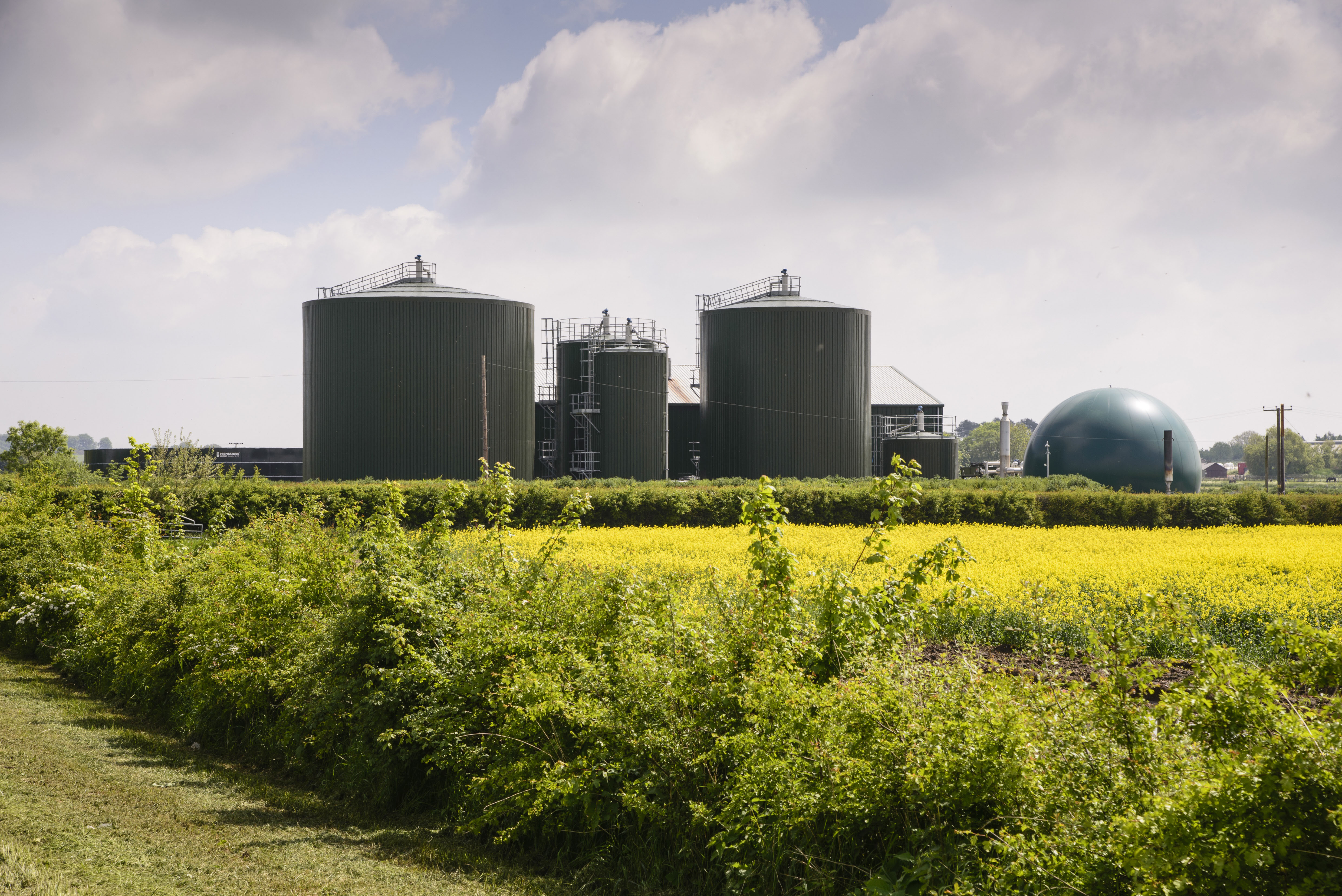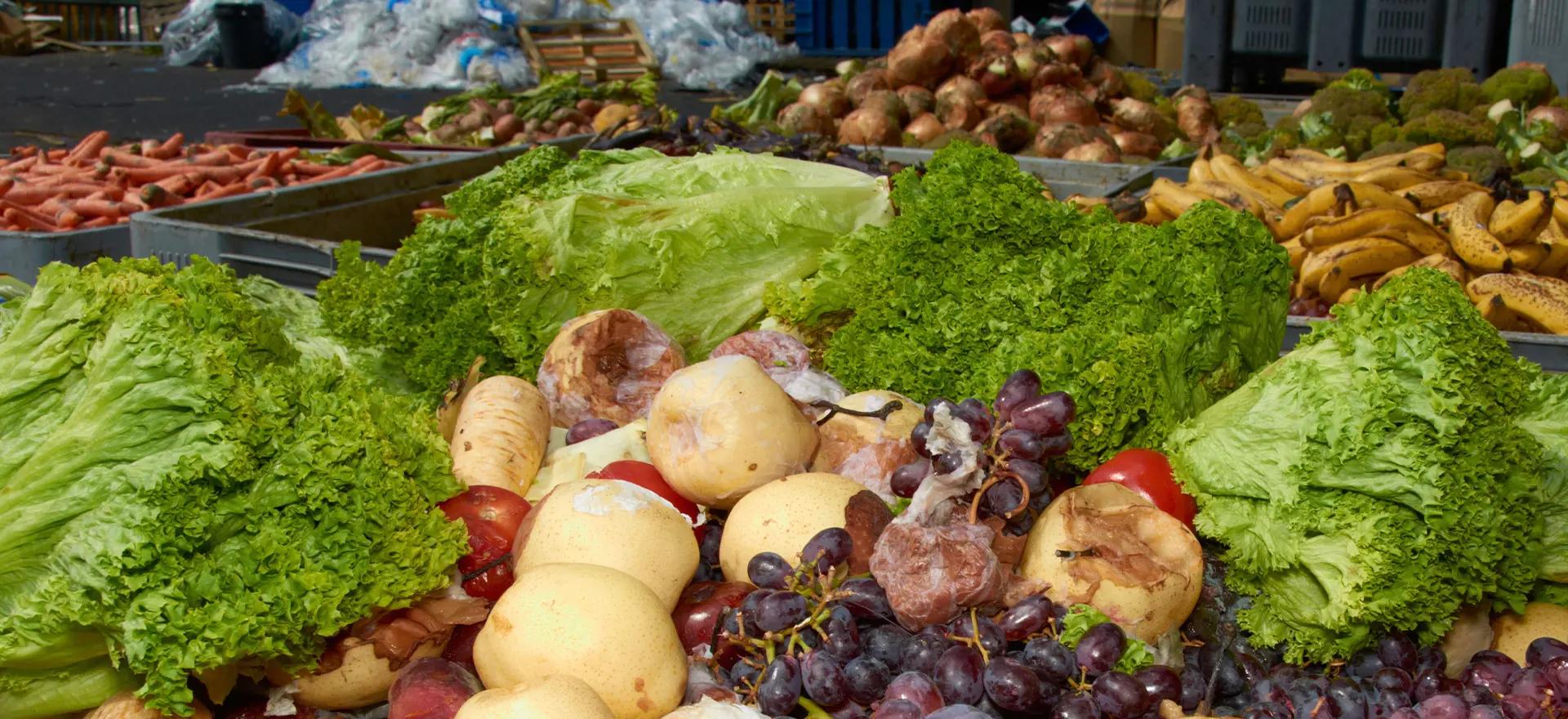The pressure is on. We are now reaching the thresholds of 3o warming compared to preindustrial global temperatures, which is resulting in climate extremes. The waste sector is estimated to contribute some 8% of all global greenhouse gas emissions. If we want to preserve our future, we need to seriously think about the waste we produce and throw away, not least our food.
This blog reflects upon recent government announcements and initiatives to better manage food waste in the UK, coupled with the incentivisation for ‘green’ biomethane gas generated to supply our energy networks. This includes a consideration of the immediate implications of those announcements which are likely to have wide ranging planning and land use implications.
The UK is already legally committed to reducing greenhouse gas emissions across the economy to reach Net Zero by 2050. Through the generation of biomethane from our organic waste, the Government sees the commercial employment of Anaerobic Digestion (AD) as moving the UK closer to its Net Zero commitment. This method is estimated to be capable of reducing annual emissions of CO; heat as many as 6.4 million homes; and provide up to 30,000 direct jobs across the country.
The recovery of value from waste through AD is a growing waste management and energy generation technology in the UK. This isn’t new but it has only really taken off in the UK in the last 20 years or so, initially at a small or farm scale, though now increasingly larger to meet wider demand. AD is a natural process by which microorganisms break down biodegradable materials in the absence of oxygen all in a controlled environment. Organic material such as food waste is processed within state-of-the-art plant and broken down to produce biogas that is then upgraded to biomethane gas. Biomethane is injected into the national gas grid, displacing the need for natural gas, a fossil fuel.
In the UK we throw away a staggering 9.5 million tonnes of food waste each year which equates to the release of 25 million tonnes of CO2 into our environment. It is estimated that around 60% of this comes from our homes with the remainder divided between business and the hospitality sectors. This represents roughly 30 % of the food we produce. The majority of this waste still ends up in landfill, highlighting the need to reduce unwanted purchasing but reflecting a lost opportunity to obtain value from the waste that is disposed of this way. Food to landfill waste has the propensity to generate methane emissions, a volatile greenhouse gas, so removing this potential is beneficial too.
Householders have long endured managing waste on their own doorstep, in particular the never- ending weekly rotation of different coloured bins on their curb side or stairwell. As consumers, we are however doing our bit towards recycling and recovery of value from the waste we generate. The way we bin our waste however is set to change. Depending on local authority area, this will see a reduction in the number of bins we keep and going forwards, allow for the separate collection of food waste.
In a bid to overcome the stagnation of waste recycling rates in England, the Government is proposing new exemptions to make sure that waste collectors will be able to collect dry recyclables together, in the same bin or bag, and collect organic waste together, to reduce the number of bins required. Where food waste is collected separately, it can be reprocessed through AD to create organic fertiliser and renewable biogas, which can be used to produce heat, electricity and transport fuel, bolstering the UK’s energy security. Separate food waste collections are viewed as the cornerstone of Defra’s Food and Drink Waste Hierarchy.
Weekly collections of food waste will also be introduced for most households across England by 2026 –cutting food waste heading to landfill. This will also stop a trend towards three or four weekly bin collections seen in some local authorities across the UK, particularly in Wales. Food waste collections this way will enable reduction in the amount of food waste going to landfill. This will help to achieve our Net Zero strategy target to eliminate biodegradable waste sent to landfill from 2028.
With this in mind, Defra has announced that Local Authorities and AD operators can ‘plan with confidence to put contracts and infrastructure in place to ensure inedible food waste goes to AD treatment as the first recycling option’. The placement of contracts and development of necessary infrastructure does not come without its own challenges, not least with respect to planning and land use considerations.
The government supports AD as a means of sustainably managing waste and recovering value in the form of low carbon renewable energy generation. In a bid to reduce reliance on natural gas consumption, reduce carbon emissions and introduce independence, security and resilience to the energy sector, the Government provides strong support and incentives through the Green Gas Support Scheme. This provides tariff-based support for biomethane produced using AD, which is injected into the gas grid and is a direct replacement for fossil fuel sourced natural gas. The scheme opened for applications on 30 November 2021 and at present runs to an extended deadline of 31st March 2028. Under this scheme, AD operators are required to generate at least 50% of biogas from waste.
The production and delivery of ‘green’ gas to the national network helps reduce carbon emissions in difficult to reach areas, such as heavy industry and residential heating. As such, the use of biodegradable waste products for creating biomethane is strongly supported by OFGEM and the Department for Transport and Renewable Transport Fuel Obligation.
An added benefit of the process is that AD produces a digestate which is used as a biofertiliser which retains the high nutrient content of the waste feedstock. It is pasteurised and deodorised, and offers a predictable local supply to farmers, displacing their use of artificial fertilisers and raw manures. This is a significant benefit to the agricultural sector and helps offset the practice of spreading raw manures to land, the result of which results in nutrient over-enrichment and harm to our natural water environment.
Typically, small scale AD developments mainly manage manures, biodegradable farm waste and purpose grown crops to produce biomethane, often then combusted in a CHP plant to generate electricity, the surplus of which is exported to grid. These operations are generally self-contained, in rural isolated locations and uncontentious. AD plants designed to manage domestic food waste and organic farm wastes and manures now operate to a larger scale and today we see an increasing number of proposals coming forwards for new facilities, also in rural locations.
The siting of new anaerobic digestion or bioenergy facilities is increasingly falling within the public’s consciousness, more so where proposals sit close to centres of rural population. Principal concerns raised often relate to traffic generation and carriage of imported feedstock and exported digestate to local agricultural users; odour and environmental controls; and the scale of development necessary, particularly if this is in the countryside and is perceived to be industrial in appearance. The difficulty faced by new gas to grid facilities is that they need to be located accessibly to the National Gas Grid network, which by its very nature takes its course through rural areas.

Development plans by and large haven’t yet caught up with the demands of larger scale AD, though often have supportive regime in place for small - scale facilities which accept farm wastes. This has therefore seen a number of larger proposals in the planning system stall, particularly where the voice of the local community is loud and which has learnt from the experiences of well-established pressure groups which routinely object to other forms of waste management, often blurring the issues and technologies.
The path to Net Zero has many threads and challenges. With some 9.6 million tonnes of organic food entering the waste stream each year, our own contribution to Net Zero starts at the supermarket. Here our choices need to lead to a reduction in waste, then at the kitchen door reduce the food we do not consume and then discard.
The food waste which cannot be consumed may however ultimately contribute to the UK’s energy security and resilience. The Government’s announcements pave the way for greater investment in new AD infrastructure, greater offtake in biogas to energise our power network.
An expanded network of larger scale AD facilities now required will however need to meet the challenges presented by locational requirements and the voice of local communities in decision making.
Jonathan Standen is a planning director with Lichfields, experienced in AD, who specialises in Net Zero, energy generation and waste management.
jonathan.standen@lichfields.uk




